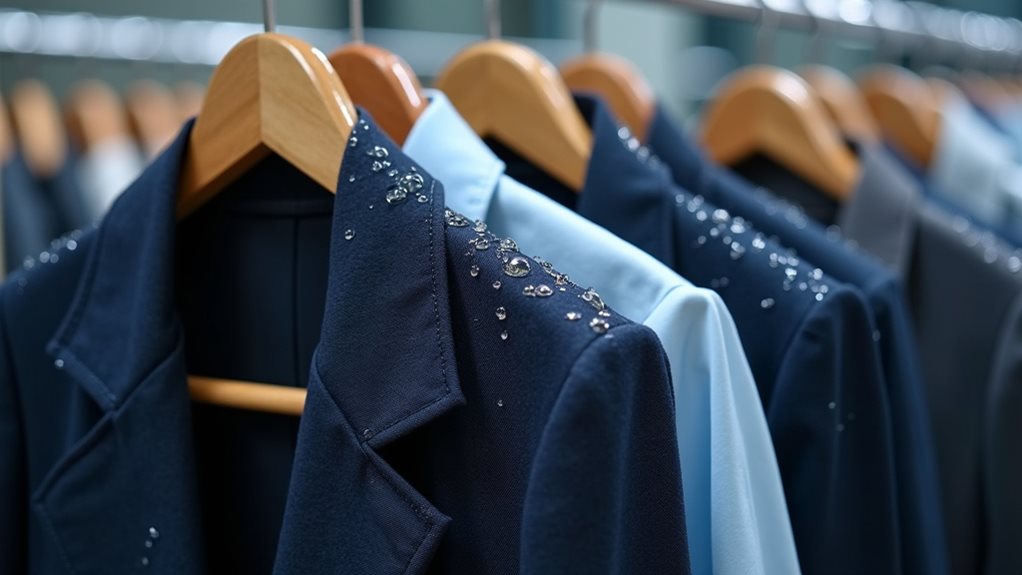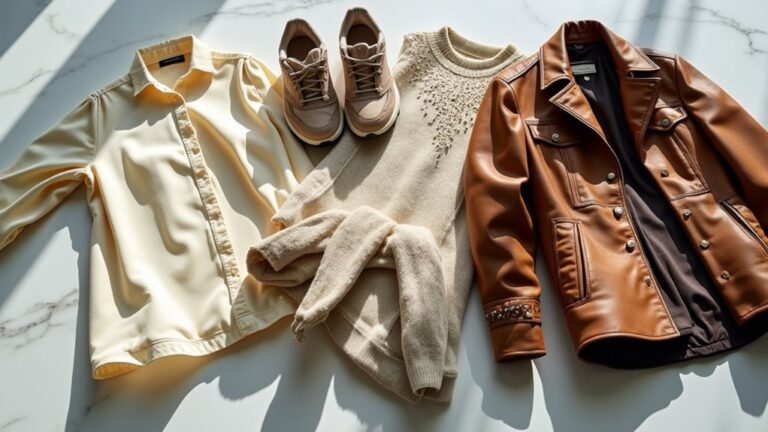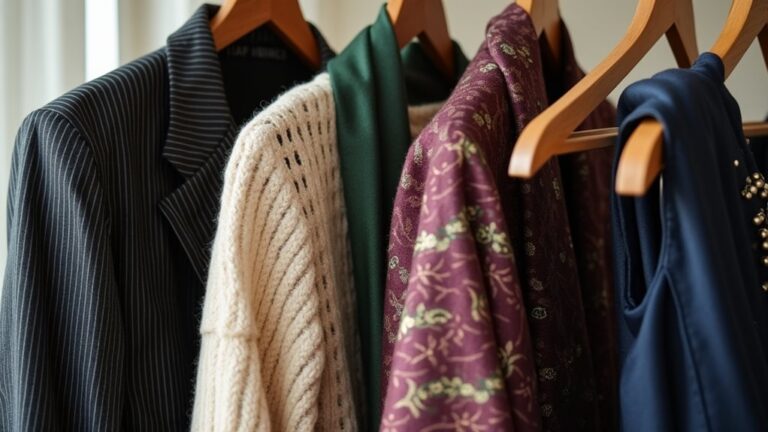You can get your dry cleaned clothes wet, but I’d honestly recommend against it since water can damage delicate fabrics like silk and wool, causing shrinking, color bleeding, and distortion that’ll make you regret that expensive cleaning bill. I’ve learned the hard way that freshly dry cleaned garments often feel slightly damp anyway because the solvent hasn’t completely evaporated, so adding water just compounds the problem and potentially ruins your investment – there’s more to protecting these garments than you might expect.
Understanding the Dry Cleaning Process and Solvents
The mystery of dry cleaning always puzzled me until I realized that “dry” doesn’t actually mean what you’d think it means, and honestly, the name is pretty misleading when you consider that your clothes do get wet during the process.
Instead of water, dry cleaners use liquid solvents like perchloroethylene (PERC) to clean your garments, which means they’re absolutely getting wet—just not with water. This solvent used in the cleaning process is particularly brilliant at dissolving oil-based stains that regular washing can’t tackle, like that stubborn grease spot from your favorite pizza 🍕.
The entire process happens in specialized machines at controlled temperatures, typically around 86 degrees Fahrenheit, guaranteeing your dry cleaned items get thoroughly saturated with solvent before being filtered and reused. After the cleaning cycle completes, garments go through a drying phase where the solvent evaporates, leaving your clothes clean and ready for pressing and finishing.
Why Clothes Feel Damp After Dry Cleaning
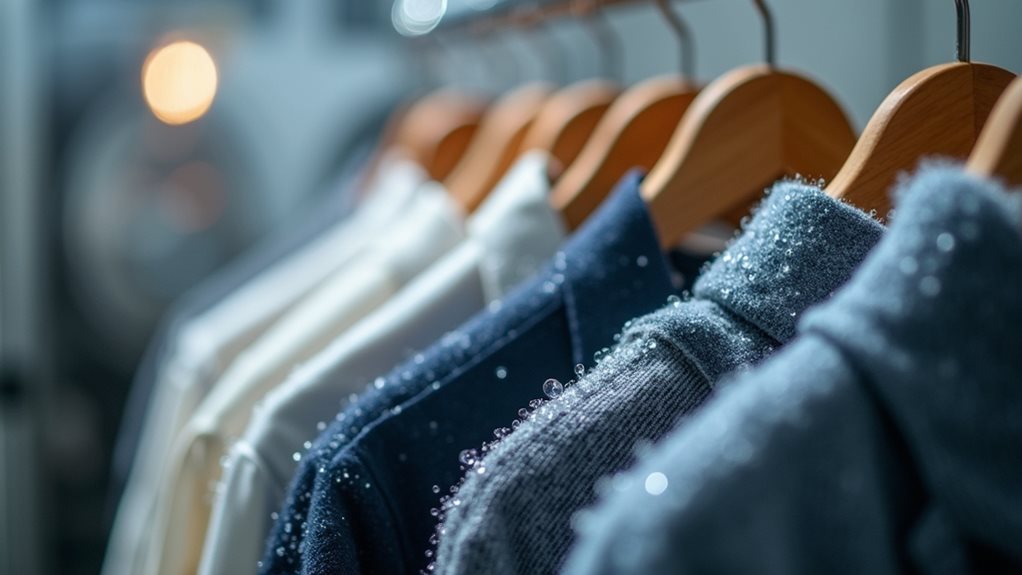
After picking up my favorite blazer from the dry cleaner last week, I couldn’t help but notice it felt slightly damp to the touch, which honestly made me wonder if something had gone wrong with the cleaning process.
Turns out, this dampness is completely normal! During dry cleaning, your garments get washed with liquid solvent rather than water, and sometimes that solvent doesn’t completely evaporate during the drying phase.
The thickness of your fabric plays a role too – heavier materials like wool coats tend to retain more moisture than lightweight blouses.
Don’t panic if your clothes feel slightly damp when you collect them; just hang them in a well-ventilated area at home, and they’ll finish drying naturally within a few hours.
This residual dampness occurs because chemical solvents like perchloroethylene or eco-friendly alternatives can sometimes remain in the fabric fibers even after the extraction and drying cycle is complete.
What Happens When Dry Cleaned Garments Get Wet
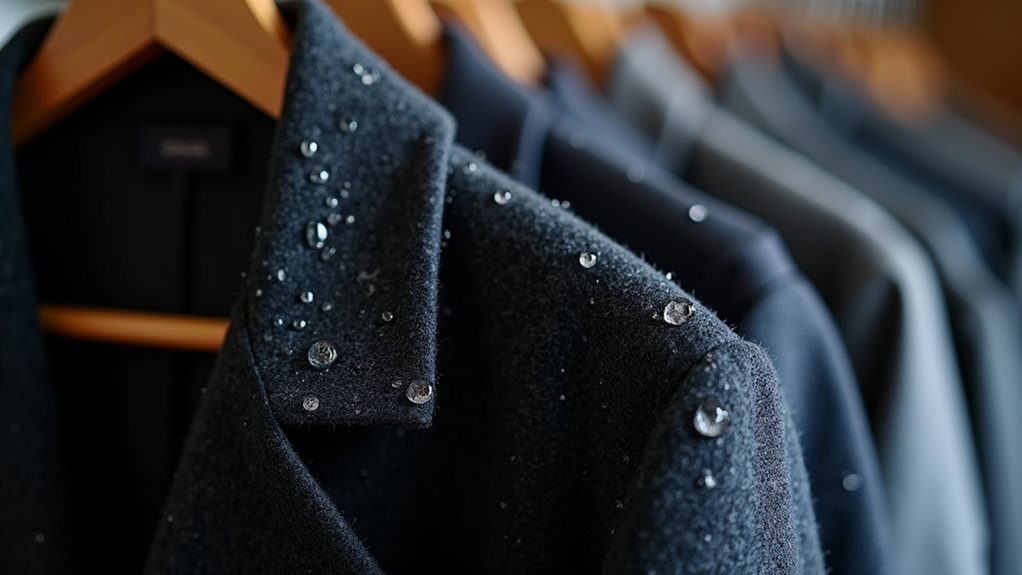
While your dry cleaned clothes are designed to avoid water during the cleaning process, life has a funny way of throwing curveballs at our most precious garments. When those beautiful pieces do encounter unexpected moisture, the results can range from mildly annoying to downright heartbreaking.
Water exposure can wreak absolute havoc on your dry cleaned garments, especially those delicate items like silk blouses or wool coats that you’ve invested your hard-earned money in. The fabric might shrink, colors could bleed into each other creating unwanted tie-dye effects, and the shape you loved so much can become distorted beyond recognition.
Even worse, certain stains become nearly impossible to remove once they’ve dried, potentially causing permanent damage that’ll make you question every life choice that led to that moment 😅. This damage occurs because many fabrics are particularly sensitive to water and agitation, which is precisely why they require the specialized solvents used in professional dry cleaning processes.
Proper Care and Handling of Freshly Dry Cleaned Items
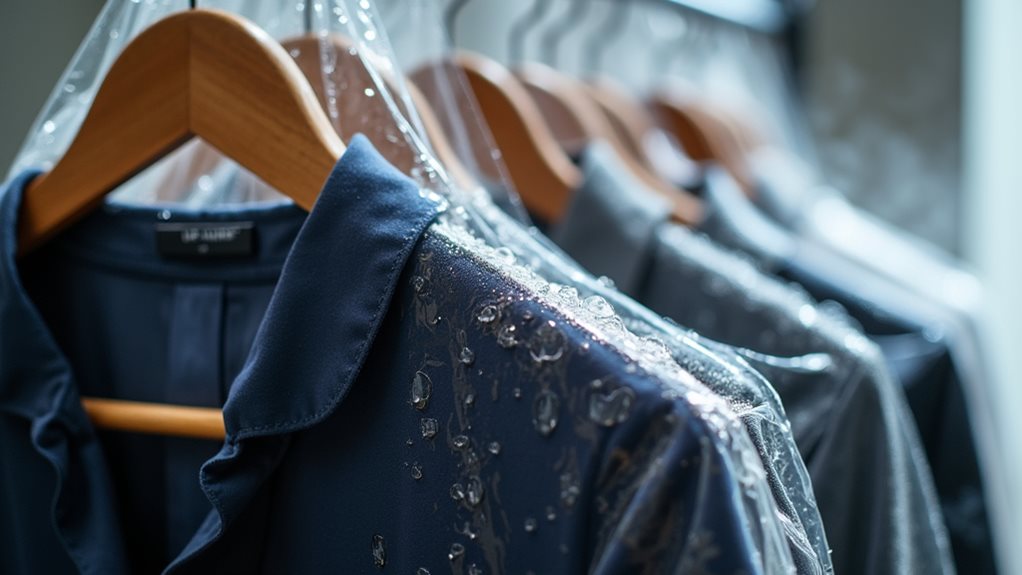
Getting your clothes back from the dry cleaner feels like Christmas morning, but before you rush to wear that gorgeous blazer or hang everything up, there’s actually a delicate dance of proper handling that can make or break your investment in looking fabulous.
Let those dry cleaned garments breathe for about thirty minutes before storing them, since they often retain hidden moisture from the cleaning process.
Always check your care labels for specific handling instructions, because trust me, I’ve learned this lesson the hard way 😅.
Keep your hands clean and dry when touching freshly cleaned items, and invest in breathable garment bags for storage – they’re like protective shields against humidity and environmental damage that could ruin your wardrobe investment.
The dry cleaning process uses chemical solvents like perchloroethylene instead of water, which is why proper ventilation during the breathing period is especially important for your health and the garment’s longevity.
Protecting Your Investment in Professional Cleaning Services
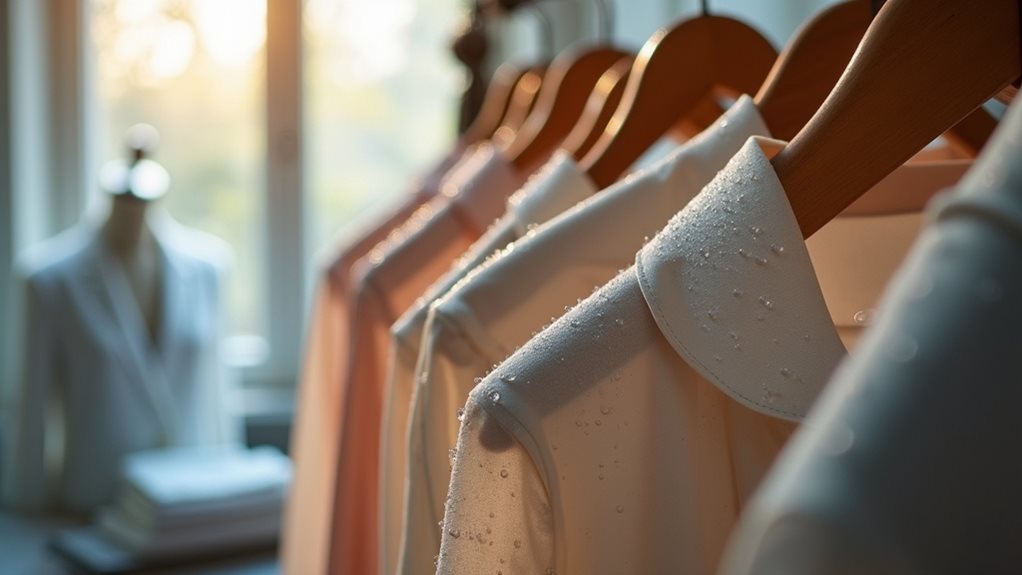
Speaking of making the most of your dry cleaning investment, I learned an expensive lesson when I splurged on getting my wool coat professionally cleaned only to wear it during an unexpected downpour the very next day, watching helplessly as water spots formed and my $40 cleaning bill fundamentally went down the drain.
Protecting your investment means following care instructions religiously, especially regarding moisture exposure after the cleaning process.
You’ve paid good money for professional services, so don’t sabotage yourself by immediately exposing dry cleaned garments to rain, humidity, or spills.
Check weather forecasts before wearing freshly cleaned items, store them properly in breathable garment bags, and resist the urge to wear that perfect outfit if Mother Nature isn’t cooperating – your wallet will thank you! 😅
Dry cleaning uses chemical solvents instead of water to clean delicate fabrics, which is why exposure to moisture after the process can undo the careful preservation of your garment’s integrity and appearance.

